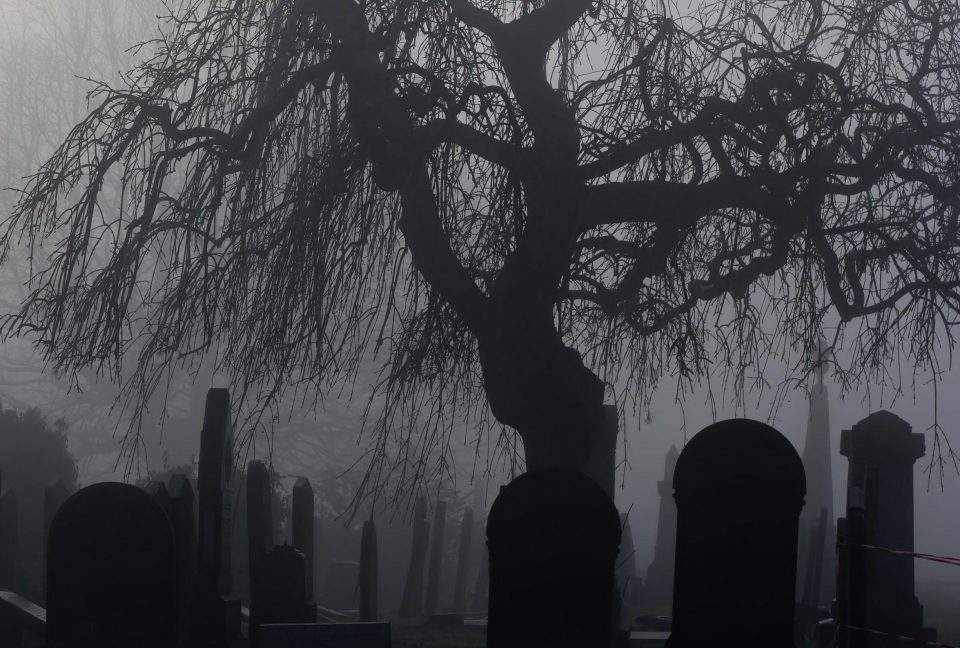|
There is a story, from when I was five or six, about the first time I saw a Stephen King series. I believe it was Storm of The Century, where a small town in Maine is blocked off by a huge snowstorm and subsequently terrorized by what turns out to be a demon. Suicides occur, children are taken to become evil protégé, all while the villain continuously sings “I’m a Little Teapot.”
I remember this vividly, you might notice- because it scared the hell out of me. As did The Tower of Terror, that skeleton army scene in The Black Cauldron, the entire Fantasia sequence of “Night on Bald Mountain.” The one time I watched sections of The Wall when my parents didn’t see me come in (a bad idea, in hindsight). I suffered from one fired-up imagination and had a habit of taking frightening imagery, allowing my brain to fill in the story’s blanks. This resulted in a lot of sleeplessness and nightmares. “They’re only stories,” my father told me once. “Like Little Red Riding Hood and The Big Bad Wolf. Remember, that wolf always loses.” Something in those words settled into my soul, and I revisit them sometimes. While I scared very easily as a child, I grew to like and write gothic fiction overtime- a lot of writers do that. A close cousin to historical and horror, and a little like neither. More in common with cabaret music and steampunk culture these days too. Tim Burton was always fun, and I loved the ghost stories book that my mother had passed along to me- the kind with The Monkey’s Paw and ghostly women that haunted roadside hotel. When I was eleven, I sunk my teeth into Edger Allen Poe’s The Black Cat and Lemony Snicket’s A Series of Unfortunate Events. The wolves were there, and they came in the form of human condition, negligence, and impossible odds. There is complexity and nuance to each monster, and I saw hope and cleverness there. I found that through fear- something these stories often used, there was also glints of compassion and heroics. I fell in love. I dove into the genre and all it had to offer. As a reader, a writer, and I suppose, as a person, I’ve always related heavily to that one Doctor Who quote from the Weeping Angels episode with Sally Sparrow. “I love old things. They make me feel sad. It’s happy for deep people.” While a bit on the “emo teenager” side of statements, I’ve far more in common with old ghosts and antique books than I really should. There is an otherness there that I understand. There is a rather interesting phenomenon in horror and gothic fiction that taps into Otherness. These stories exist in several ways: the heroes verses The Other (Dracula, The Phantom of The Opera), the village verses The Other (The Masque of The Red Death), and The Other verses himself (The Picture of Dorian Gray, The Strange Case of Dr. Jekyll and Mr. Hyde, and one could argue Frankenstein). Scholars like Jarlath Killeen have discussed the connotations of this in early gothic fiction, and their often racially or culturally charged supernatural entities. There is a mirror effect that occurs in these stories as well, a self-reflection not only of the author themselves, but of the cultural state they occupy, particularly in female authors. Female horror authors love Otherness. Mary Shelley reflects her times with subjects of responsibility and parentage, and with a monster so brilliant and devastating powerful- yet so physically abhorrent. Shirley Jackson, who died too young to see how her books have lasted, loved the subject of dysfunctional family and tragedy. Anne Rice’s vampires are as depraved as they are empathetic. And this does not go without critique, films like The Woman in Black, Corpse Bride, and Crimson Peak, more feminine in focus and nuanced in their villains, were dragged for being “too sad” and “not scary enough.” This comes in clear contrast to Stoker, or Wilde, or much of King; monsters are enemies to be defeated. Otherness is something separate from the hero, or even something that consumes the hero to his demise (see Dorian). There is no space for nuance- we’re back to Little Red Riding Hood and The Big Bad Wolf. Wolves always lose. But what if your wolves are not so literal? What if our enemies are not the ghosts we face, but the beasts that created them? Or what’s more- what if your wolves are too literal? Women spend most of their lives facing what the Big Bad Wolf represents, making this threat more reality than fiction. Perhaps women understand their monsters better, or see them differently. One of the most striking statements I’ve encountered about gothic horror is that men write monsters based on their enemy (take “enemy” to mean whatever you like sociologically); women write monsters based on how they view themselves. They aren’t just fighting the monster, they are the monster. Society certainly seems to think so, given its track record with women: witch trials, poor mental health, suppression, claims of hysteria… Is it any wonder we feel for the Other? I write my own sad ghosts and empathetic monsters now, not near as scared of horror movies these days. If anything, I’ve come to understand them a bit better. Rather than fearing the wolves, society sometimes acts as though women might just become one of them. And maybe they’re right.
0 Comments
|
About MeCaitlin Jones is an author, film editor, and lover of all things Victorian and fantastic. Please check in for information on her upcoming series. Archives
August 2020
|

 RSS Feed
RSS Feed
